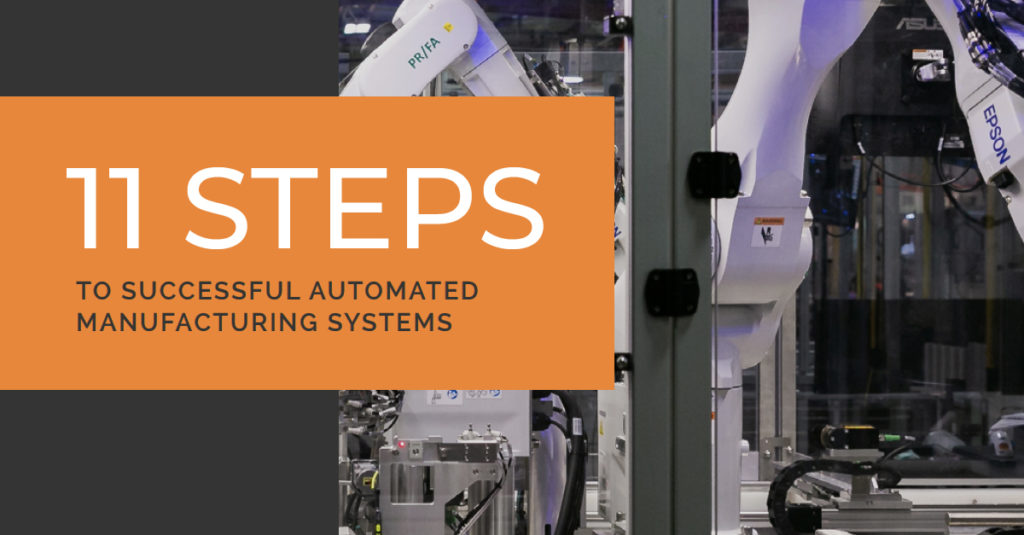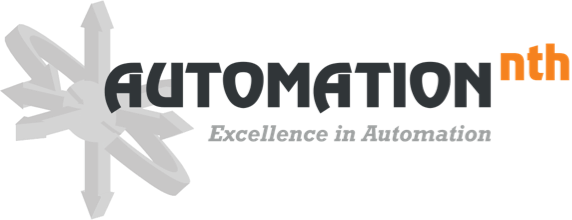
This is the second post in the series of 11 steps to follow to achieve success in automated manufacturing systems. If you’re new to this series, you can read the first step When to Automate here.
In this post, we’re covering Step 2—Where To Start.
- When to Automate
- Where to Start
- Who Should Be Involved
- How an Automation Architect Selects an Equipment Supplier
- The Contract
- Defining the Solution
- Project Execution
- Runoff & Factory Acceptance Test at Supplier
- Operator & Maintenance Training
- Installation, Site Acceptance Test & Production Start-Up
- Continuous Improvement
To get all 11 steps together in an ebook, fill out the form below and we’ll send it to you!
Step 2: Where to start
After the manufacturer has committed to automation, we believe the manufacturer should enlist the help of an “automation architect.” Similar to a building architect, an automation architect partners with its customer from initial concept all the way through project completion to ensure that the vision becomes reality and objectives are met. The automation architect also helps select the appropriate automation suppliers to build the equipment.
An automation architect provides the following benefits to manufacturers:
RISK MITIGATION
Consistency from cradle to grave reduces the number of handoffs throughout the project.
SPEED
Faster, tighter feedback loops across different phases of the automation lifecycle
EFFICIENCY
Common controls architecture across the supply chain, making machines
easier to maintain and optimize
ACCOUNTABILITY
Maintain single point of accountability while enjoying benefits from the
capabilities of many automation vendors
After hiring automation architect
After the manufacturer hires an automation architect, the following steps should be followed:
- SELECT A PROJECT TEAM
This will be covered in Step 3 of the 11 Steps to Successful Automation Series: “Who Should be Involved”
- OPTIMIZE MANUFACTURABILITY
If the product design is not yet final, review it with the automation architect in order to optimize manufacturability. Define:
- Function of the product
- Size(s)
- Basic contours and quality requirements to be produced by the system
- DEFINE
- Annual production needs
- Operational constraints (Ex. # of shifts)
- Floorspace requirements and constraints
- Time to market
- What site it’s going to and unique requirements for that location
- Cost of operators
- ANALYZE EXISTING MANUAL PRODUCTION WITH THE
AUTOMATION ARCHITECT
If there is an existing manual production process, analyze it with the automation architect. Seek opportunities to optimize this process prior to automating it.
- CREATE PRELIMINARY USER REQUIREMENTS SPECIFICATION
Create preliminary User Requirements Specification (URS) with the automation architect. Be careful to not make it overly specific so that the testing and validation process can be as streamlined as possible.
- CALCULATE A ROUGH ROI
Calculate rough ROI to narrow down automation options (ex. does full or partial automation make sense).
- CONCEPTUALIZE THE AUTOMATION STRUCTURE
Create concepts of the automation structure that will meet the manufacturer’s objectives (ex cost per square foot, number of operators, ongoing maintenance cost, etc.) and align on these concepts with the project team. Choose the concept that delivers the best ROI while meeting requirements. There are frequently trade-offs between different requirements (ex. footprint vs time to market) and the project team will help determine the appropriate trade-offs to make.
Those with systems experience universally stress that the work and planning done at this stage can make or break the success of a project, or, at a minimum, reduce the need for changes and added costs during the subsequent steps in the project development.
Perspectives on Automation
“The biggest sin of prospective users is that they have not given enough attention to be able to handle and position the product in an automated system. If you are going to automate a family of parts, choose the members of the family that can be put through the system with minimum changeover— and pick those most likely to attain high volume production based on market demand. You probably can better afford a less automated, off-line process for the low-volume, tough-to-integrate parts rather than attempting to integrate them into the automation.”
Automatic handling equipment producer
